When you think of zebras, you likely picture their distinctive black and white stripes against the backdrop of the African savanna. However, these equine relatives harbor numerous secrets and fascinating characteristics that go far beyond their iconic coats. From their unique social structures to surprising physical abilities, zebras remain one of Africa’s most intriguing yet misunderstood animals. The following collection of lesser-known zebra facts will transform your understanding of these magnificent creatures and highlight why they deserve both our admiration and conservation efforts. Prepare to be amazed by these 15 extraordinary facts about wild zebras that showcase their remarkable adaptations and behaviors.
15. Zebras Are Born with Brown and White Stripes

Contrary to the classic black and white image we associate with zebras, these animals are actually born with brown and white stripes. The brown stripes gradually darken to black as the zebra matures. This developmental color change serves an important purpose in the wild. The brownish coloration helps camouflage newborn foals in the golden grasses of the savanna during their most vulnerable early days. Young zebras can stand within 20 minutes of birth and run within an hour, but this initial camouflage provides crucial additional protection from predators while they develop their coordination and speed.
14. Each Zebra’s Stripe Pattern Is as Unique as a Fingerprint

While humans have unique fingerprints, zebras have their distinctive stripe patterns. No two zebras share identical stripe configurations, making each animal’s coat as unique as a human fingerprint. This characteristic serves multiple purposes in zebra society. Mother zebras use these patterns to identify their foals in the herd, and researchers leverage this natural identification system to track individual animals in the wild without invasive tagging methods. The uniqueness extends to all three zebra species: the plains zebra, mountain zebra, and Grevy’s zebra, though each species has characteristic general patterns that help distinguish them from one another.
13. Zebras Can Run Up to 40 Miles per Hour

Zebras are remarkably swift animals, capable of reaching speeds up to 40 miles (64 kilometers) per hour. This impressive speed is a critical survival adaptation in their predator-rich environment. While they can’t maintain this maximum velocity for extended periods, zebras can sustain a steady gallop of 25 miles (40 kilometers) per hour for longer distances when fleeing from threats. Their endurance complements this speed, as zebras can travel up to 30 miles (48 kilometers) in a single day while migrating or searching for food and water. This combination of speed and stamina makes zebras formidable prey for predators like lions and hyenas, who must work hard to catch these fleet-footed equids.
12. Zebras Sleep Standing Up

Like their horse relatives, zebras have evolved the remarkable ability to sleep while standing. This adaptation allows them to remain vigilant against predators and ready to flee at a moment’s notice. Zebras possess a specialized anatomical feature called the “stay apparatus”—a configuration of tendons and ligaments that locks their legs in place while standing, requiring minimal muscular effort. While they do sometimes lie down for brief periods of deeper sleep, particularly when feeling secure within their herd, zebras typically get most of their rest while upright. Interestingly, they usually only sleep for short intervals of about 7 minutes at a time, accumulating a total of roughly 3-4 hours of sleep daily—much less than most mammals their size.
11. Zebra Stripes Serve as a Natural Fly Repellent
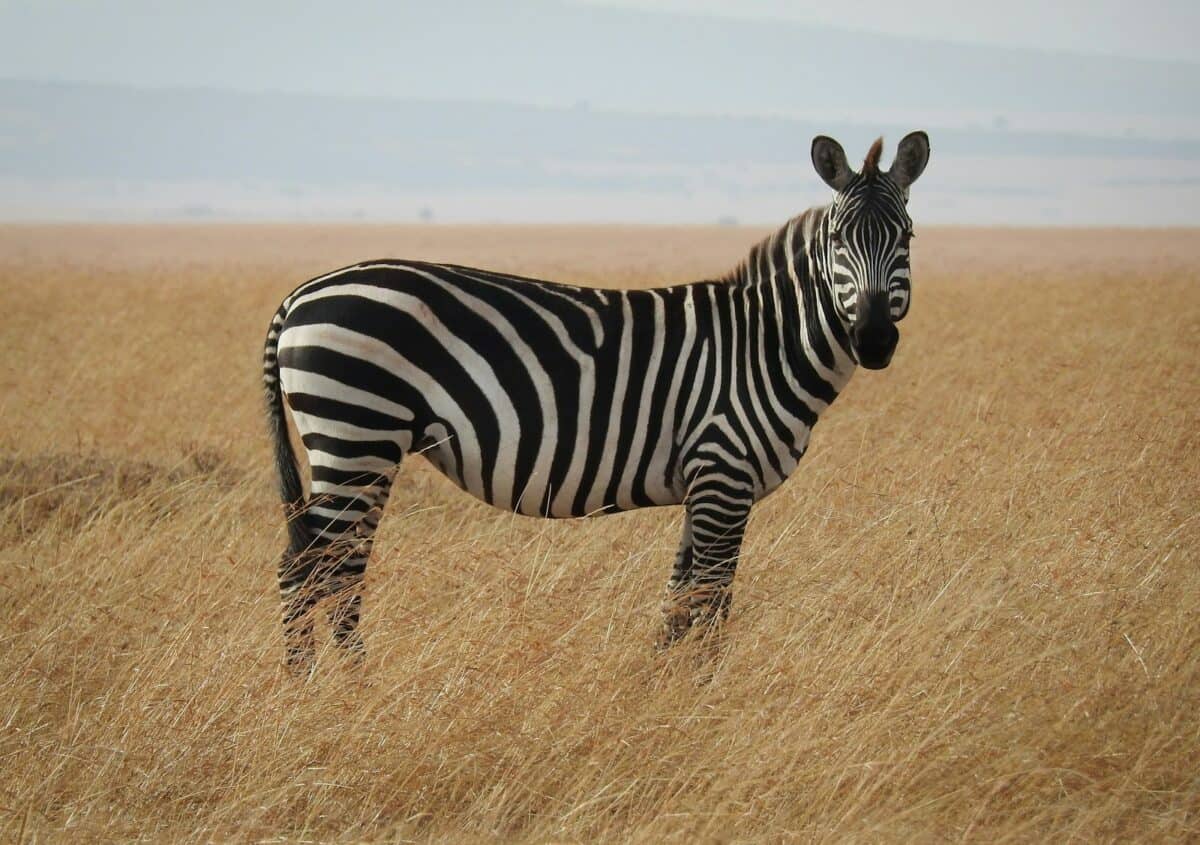
One of the most surprising discoveries about zebra stripes is their role as a natural defense against biting insects. Research published in 2019 in the journal PLOS ONE demonstrated that the black and white striped pattern creates an optical illusion that confuses flies, particularly horseflies and tsetse flies. These blood-sucking insects, which can transmit deadly diseases, have difficulty landing on zebras because the stripes disrupt their perception of a solid surface. Studies showed that flies approach zebras as frequently as they do solid-colored horses, but they fail to execute controlled landings, often crashing into the zebra or abandoning their approach altogether. This natural fly-repelling mechanism represents a remarkable example of evolutionary adaptation that benefits zebras in their native habitats.
10. Zebras Have Incredible 360-Degree Vision
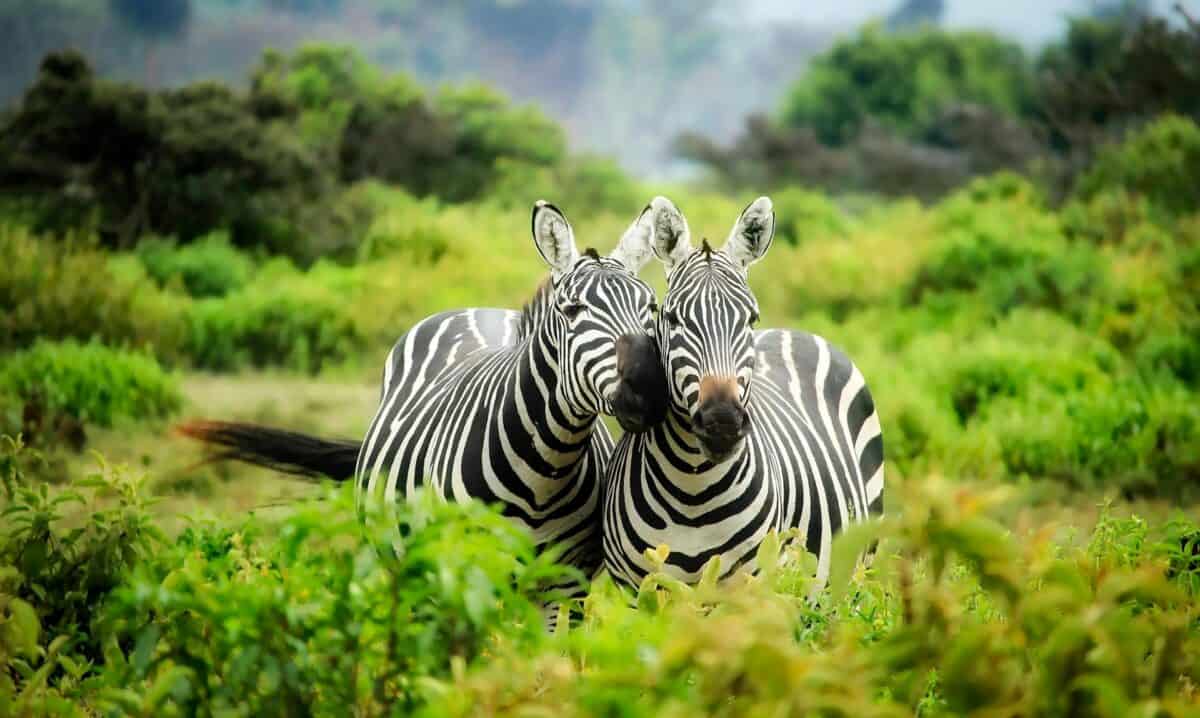
Zebras possess remarkable visual capabilities that aid their survival in the wild. Their eyes are positioned on the sides of their head, providing them with nearly 360-degree vision. This panoramic field of view allows zebras to monitor their surroundings continuously for potential predators while grazing. Additionally, zebras can see in color and have excellent night vision, which enables them to detect movement in low-light conditions when many predators prefer to hunt. Their pupils are horizontal and rectangular, similar to other ungulates, which expands their horizontal field of view and helps them spot dangers along the horizon. This exceptional visual acuity, combined with their keen sense of hearing, makes zebras highly alert to threats in their environment.
9. Female Zebras Have Longer Gestation Than Horses
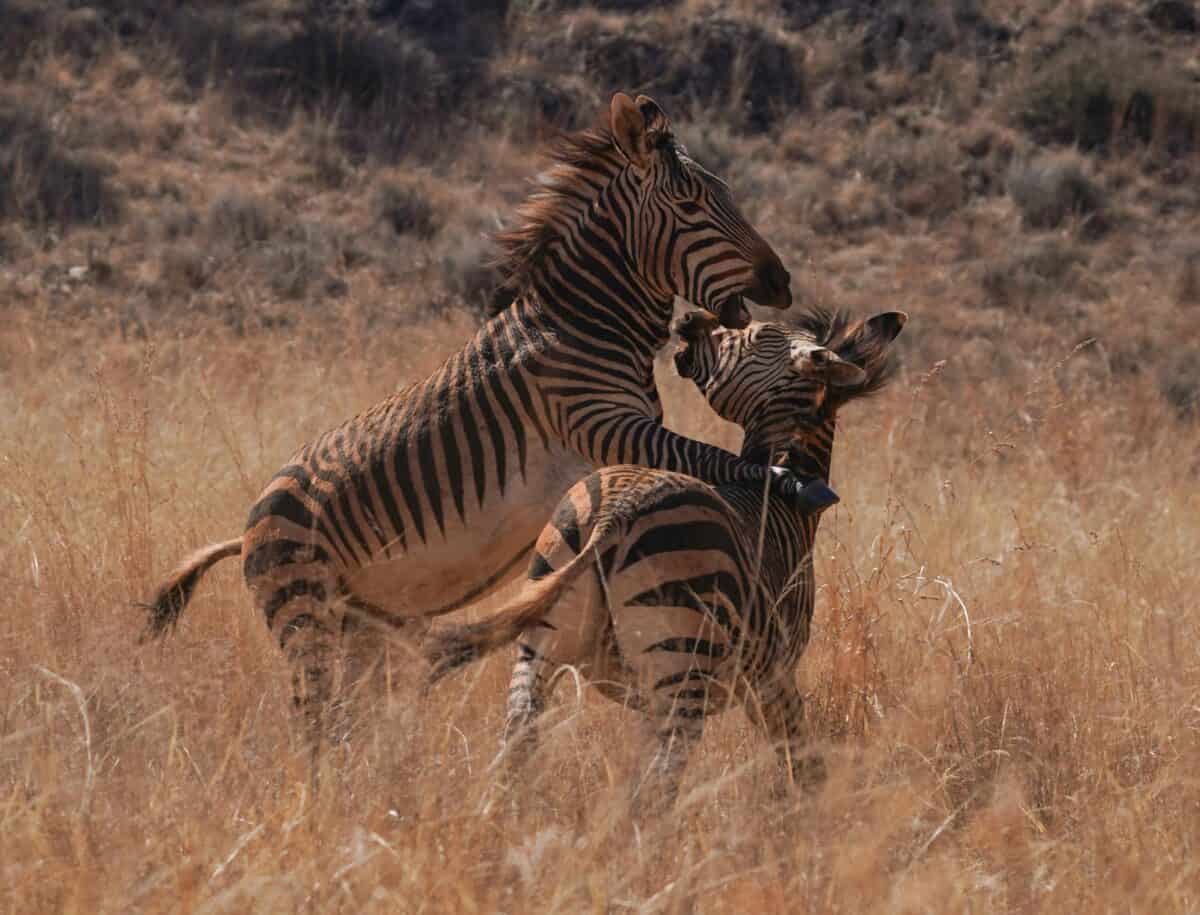
Despite being closely related to horses, zebra reproduction differs in several significant ways. Female zebras (mares) have a notably longer gestation period than domestic horses. While horses typically carry their foals for about 11 months, zebra pregnancies last between 12 and 13 months. This extended development period allows zebra foals to be born more physically mature than horse foals. As a result, newborn zebras are more independent and capable of keeping up with the constantly moving herd—a crucial adaptation for survival in predator-rich environments. A zebra mare usually gives birth to a single foal and will not become pregnant again until that offspring is independent, typically waiting at least 12 months between births to ensure each foal receives adequate maternal care.
8. Zebras Have Excellent Memory and Problem-Solving Skills

Far from being simple-minded prey animals, zebras demonstrate impressive cognitive abilities, including excellent memory and problem-solving skills. Research has shown that zebras can remember migration routes spanning hundreds of miles, returning to the same water sources and grazing lands year after year. They can also recognize individual zebras and other animals they’ve encountered before, helping them distinguish between friends and foes. Their problem-solving abilities manifest in various ways, such as finding paths around obstacles during migration or devising strategies to access water in drought conditions. In captivity, zebras have been observed learning to open gates and manipulate simple mechanisms to obtain food, highlighting their intelligence and adaptability.
7. Zebras Form Lifelong Social Bonds
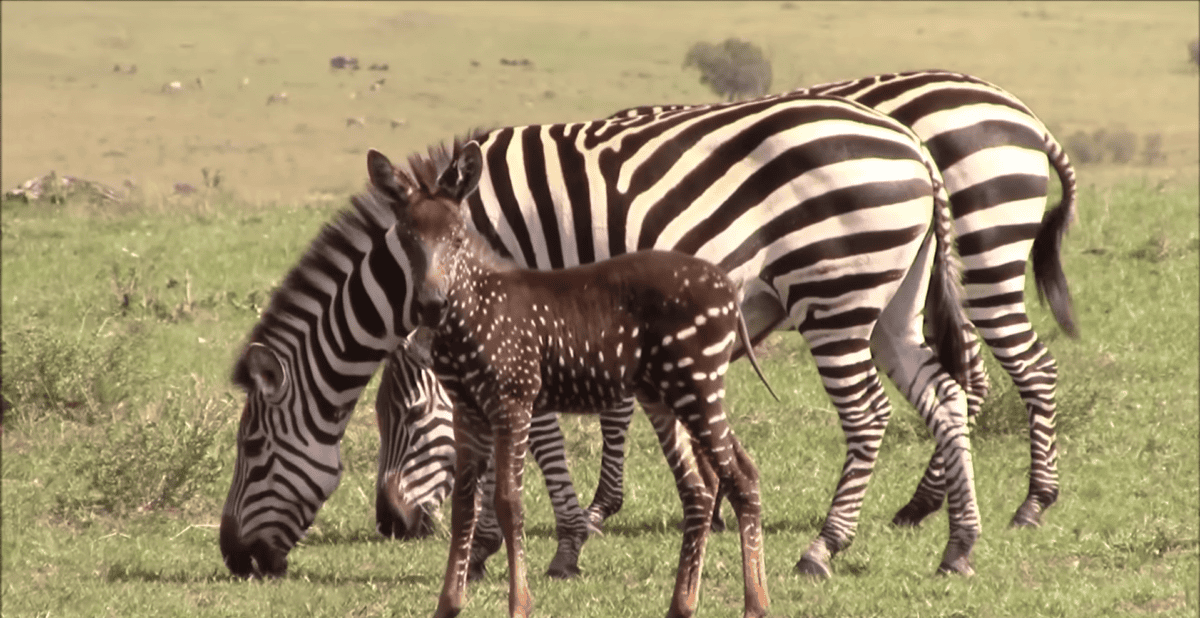
The social structures of zebra herds reveal sophisticated relationship patterns that include strong, lifelong bonds. Plains zebras and mountain zebras typically live in small family groups called harems, consisting of one stallion, several mares, and their offspring. Within these groups, zebras form deep attachments that can last a lifetime. Mares often develop particularly strong friendships with other females, standing close together, grooming one another, and even defending each other against threats. These bonds contribute significantly to herd cohesion and collective security. Interestingly, the larger Grevy’s zebra exhibits a different social structure, with males establishing territories rather than harems, though females still maintain important social connections with each other and their young.
6. Zebra Hooves Regrow Completely Every Year
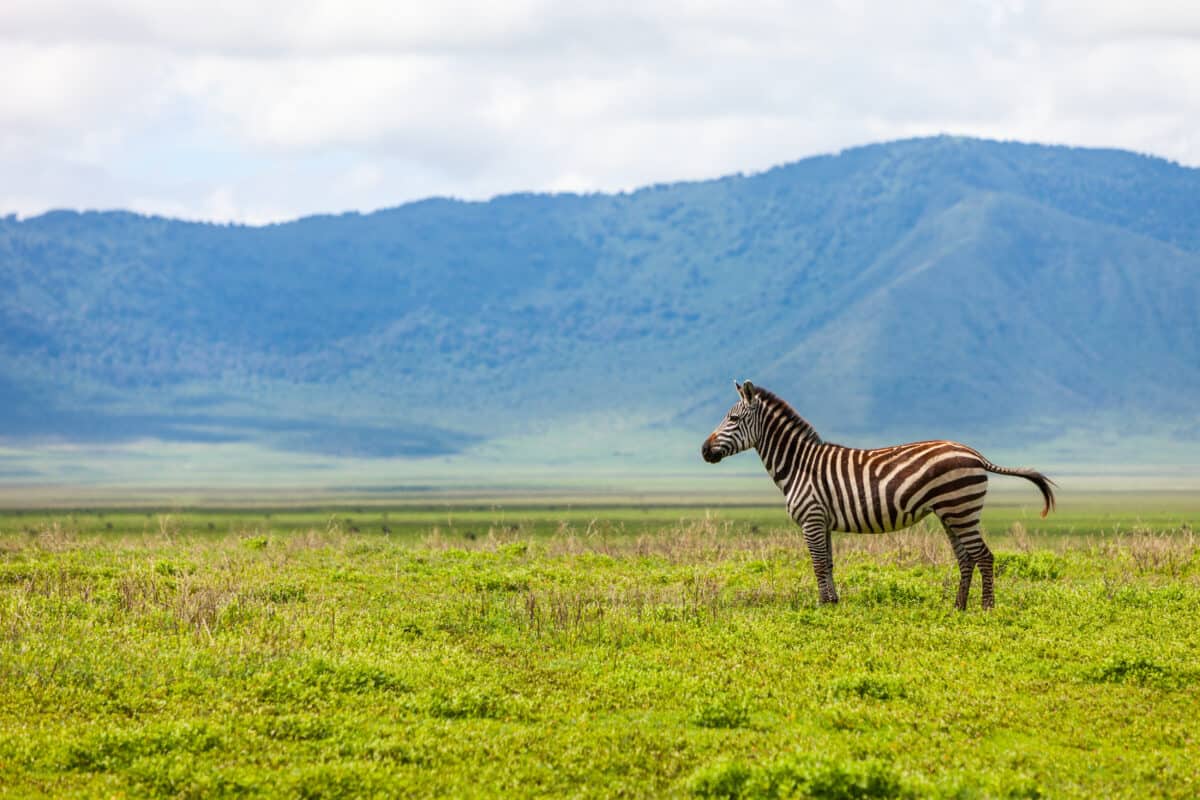
Zebras possess a remarkable physical adaptation in their hooves that helps them thrive in rough, varied terrains. Like other equids, zebra hooves continuously grow throughout their lives, with the entire hoof essentially renewing itself approximately once per year. This constant growth compensates for the natural wear from traveling across rocky, abrasive landscapes. Zebra hooves are harder and more concave than those of domestic horses, making them particularly well-adapted for both soft, muddy conditions during rainy seasons and harsh, rocky terrain during dry periods. The tough, resilient nature of zebra hooves enables these animals to travel extensive distances during migrations without suffering debilitating foot injuries or requiring the hoof care that domestic equines need.
5. Zebras Make Various Vocalizations, Including Barking
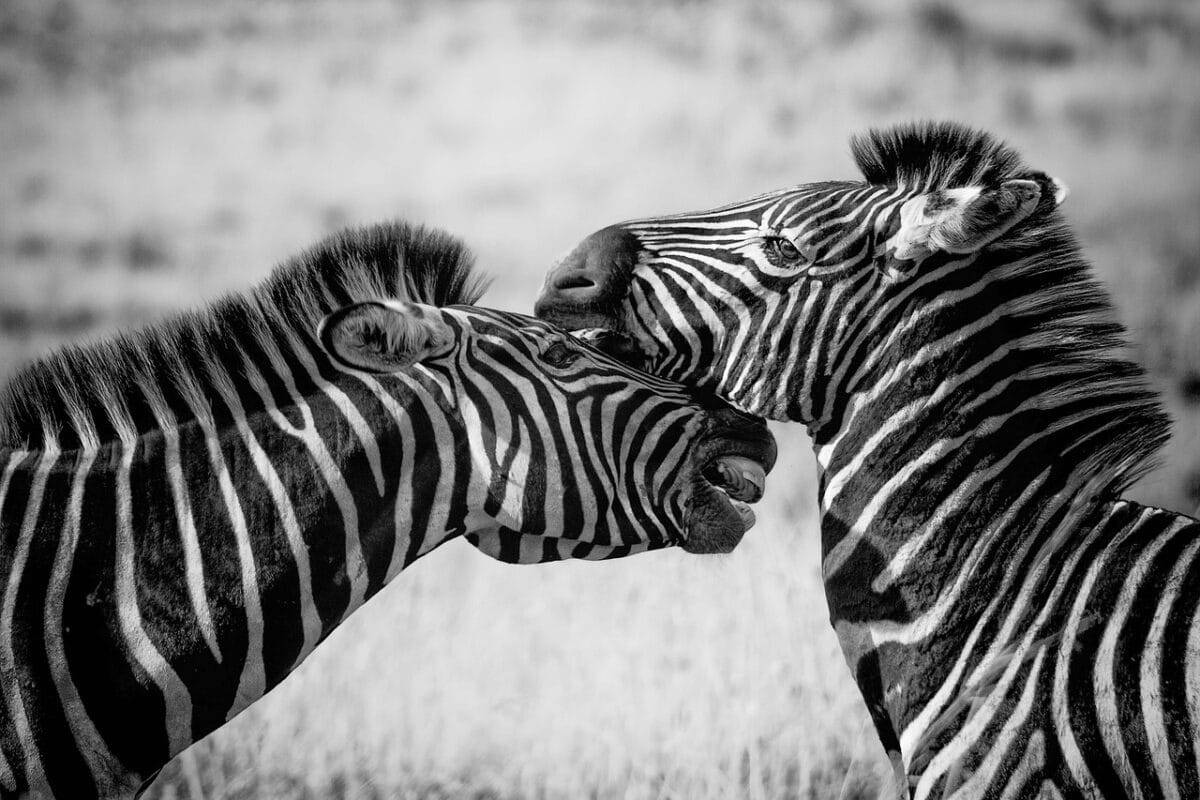
Beyond the familiar whinnying sound associated with horses, zebras produce a diverse repertoire of vocalizations that might surprise many people. Among these is a distinctive barking sound that resembles a dog’s bark, used primarily as an alarm call to alert the herd to danger. Zebras also communicate through snorts, which often signal irritation or suspicion; brays, which can be heard over long distances during mating season; and high-pitched squeals during confrontations. Young foals make soft, low nickering sounds to maintain contact with their mothers in the herd. Each of these vocalizations serves a specific communicative purpose, contributing to the complex social interactions and collective security of zebra society.
4. The Grevy’s Zebra Can Go Five Days Without Water
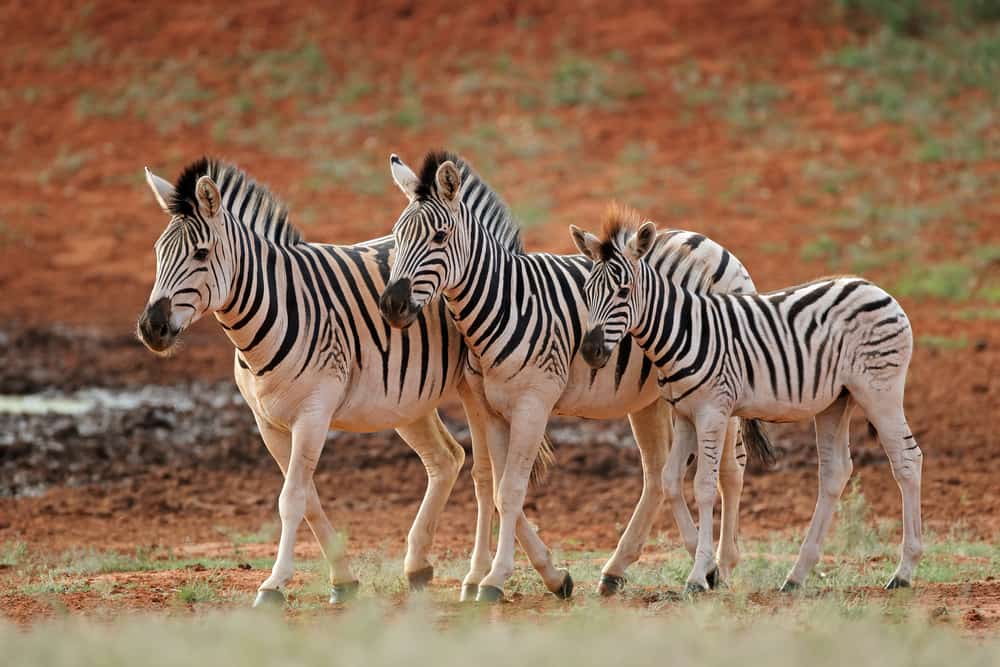
Among the three zebra species, the endangered Grevy’s zebra demonstrates exceptional drought resistance. These remarkable animals can survive up to five days without drinking water—an extraordinary adaptation to their arid habitat in northern Kenya and Ethiopia. This ability far exceeds that of other zebra species and most large mammals in Africa. Grevy’s zebras accomplish this feat through several physiological adaptations, including highly efficient kidneys that minimize water loss, the capacity to tolerate higher body temperatures to reduce water spent on cooling, and the ability to extract maximum moisture from their food sources. This water independence allows Grevy’s zebras to utilize grazing territories farther from water sources, reducing competition with other herbivores and minimizing exposure to predators that often concentrate near waterholes.
3. Zebras Can Rehydrate by Drinking Brackish Water
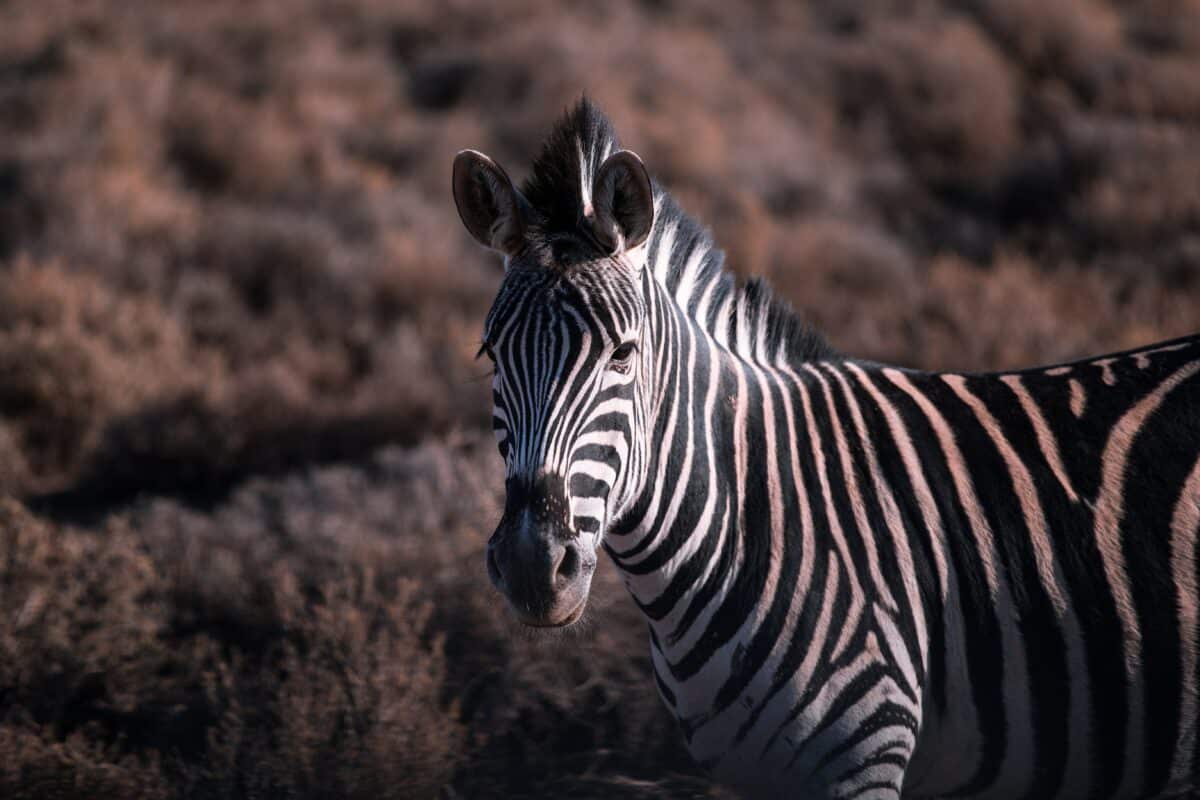
Another impressive survival adaptation of zebras is their ability to drink and process brackish (slightly salty) water that other mammals might avoid. During severe droughts when fresh water becomes scarce, this tolerance gives zebras a significant survival advantage. Their specialized digestive systems and kidneys can process water with higher mineral content than many other herbivores can tolerate. This adaptation is particularly valuable in regions where underground water sources may contain elevated salt levels due to mineral deposits. In extreme conditions, zebras have been observed digging shallow wells up to a foot deep in dry riverbeds to access subterranean water. This ability to utilize water sources unavailable to competing species helps explain how zebras have thrived across diverse African habitats for millions of years.
2. Baby Zebras Imprint on Their Mother’s Stripes
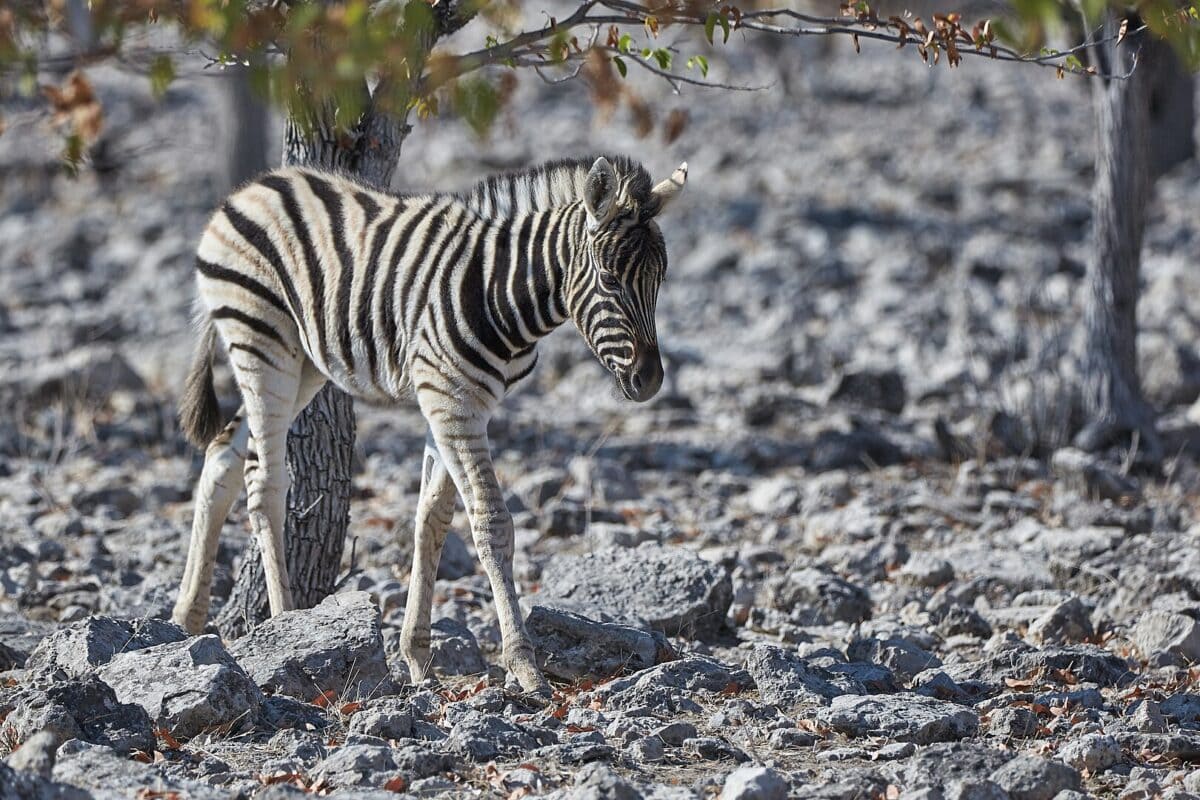
The process by which newborn zebras learn to recognize their mothers reveals a fascinating aspect of their early development. Within their first few hours of life, zebra foals imprint specifically on their mother’s unique stripe pattern rather than her scent or vocalization as the primary means of identification. This visual imprinting is so powerful that researchers have observed foals rejecting surrogate mothers with different stripe patterns even when the surrogate produces milk. The imprinting process helps explain why zebra foals can quickly find their mothers in the chaotic environment of a moving herd. Scientists believe this strong visual imprinting mechanism evolved as an adaptation to the dusty conditions of the African savanna, where scent recognition might be less reliable than visual cues.
1. Zebras Can Rotate Their Ears 180 Degrees
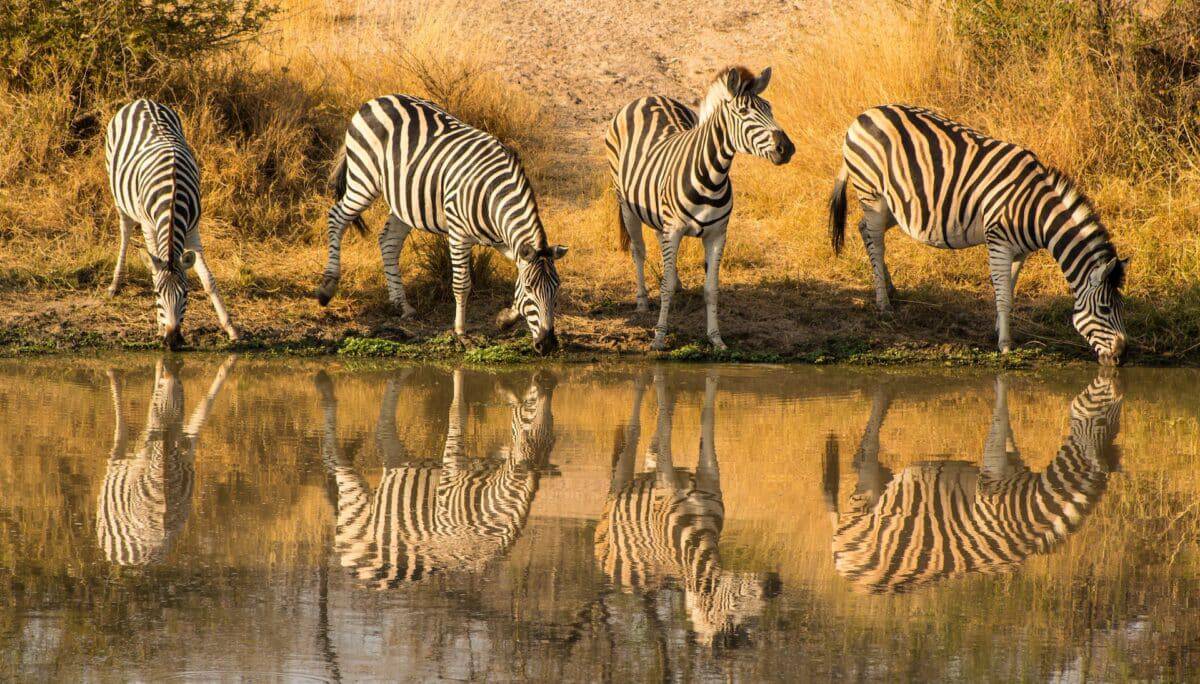
Zebras possess remarkably mobile ears that can rotate nearly 180 degrees independently of each other. This exceptional ear mobility serves multiple purposes crucial to zebra survival. By rotating their ears in different directions simultaneously, zebras can monitor sounds from various locations without moving their heads, allowing them to remain vigilant while continuing to graze. Each ear can be positioned to capture sounds with pinpoint accuracy, helping zebras detect predators even when they’re not visible. Additionally, zebras use ear positions as important social signals within their herds. Ears pinned back indicate aggression or irritation, ears forward show interest or alertness, and relaxed ears signal contentment. This sophisticated auditory capability complements their excellent vision to create a highly effective predator detection system.
Conclusion: The Magnificent Complexity of Zebras
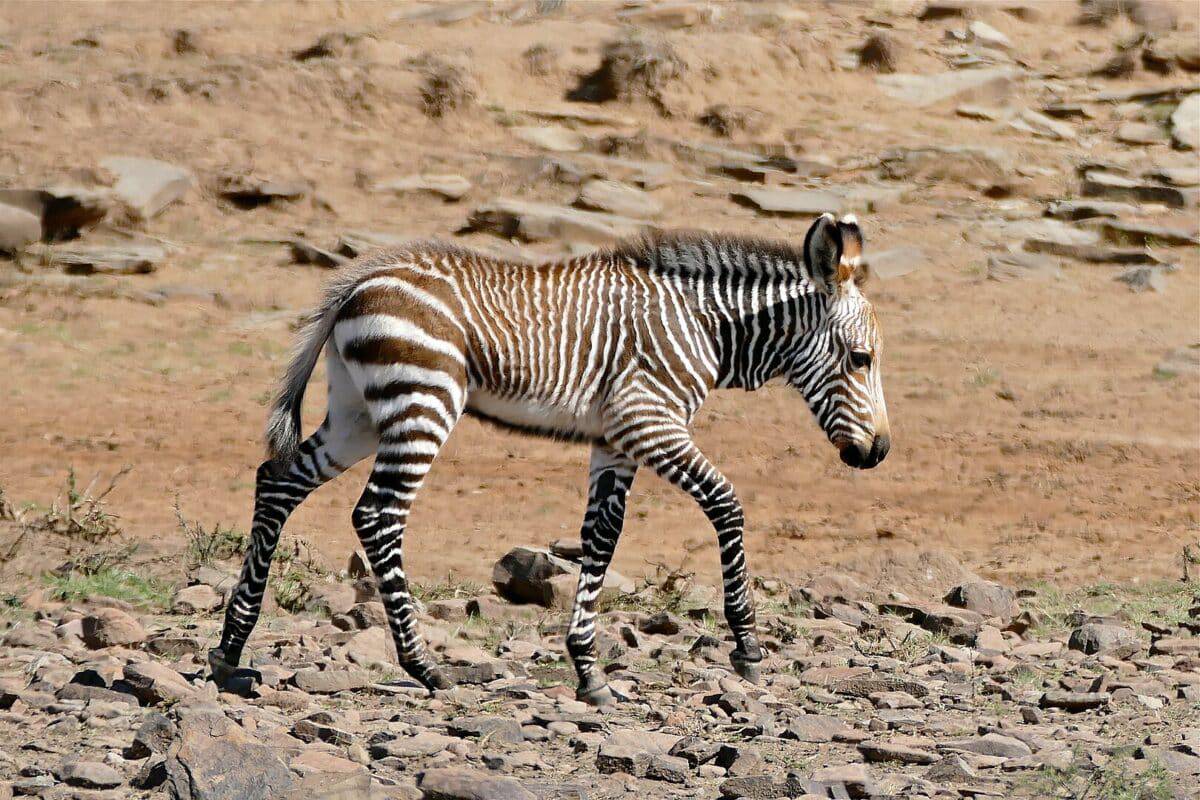
Zebras represent far more than their iconic stripes, embodying an extraordinary collection of evolutionary adaptations perfectly tailored to their challenging African environments. From their unique biological features like drought-resistant kidneys and continuously regenerating hooves to their complex social structures and cognitive abilities, zebras demonstrate nature’s remarkable capacity for specialized innovation. Unfortunately, all three zebra species face significant threats from habitat loss, competition with livestock, poaching, and climate change, with the Grevy’s zebra now endangered and numbering fewer than 2,500 individuals in the wild. By understanding and appreciating the fascinating intricacies of zebra biology and behavior presented in these lesser-known facts, we gain a deeper respect for these magnificent animals and strengthen the case for their conservation. As we continue to uncover more secrets about these striped wonders, the urgency of preserving them and their habitats for future generations becomes increasingly clear.
- This Jellyfish May Be Functionally Immortal—Here’s What We Know - August 10, 2025
- The Real Wildlife Behind the Great American Road Trip - August 10, 2025
- Top Volcano Trails Where You Might Spot Rare Wildlife - August 10, 2025

